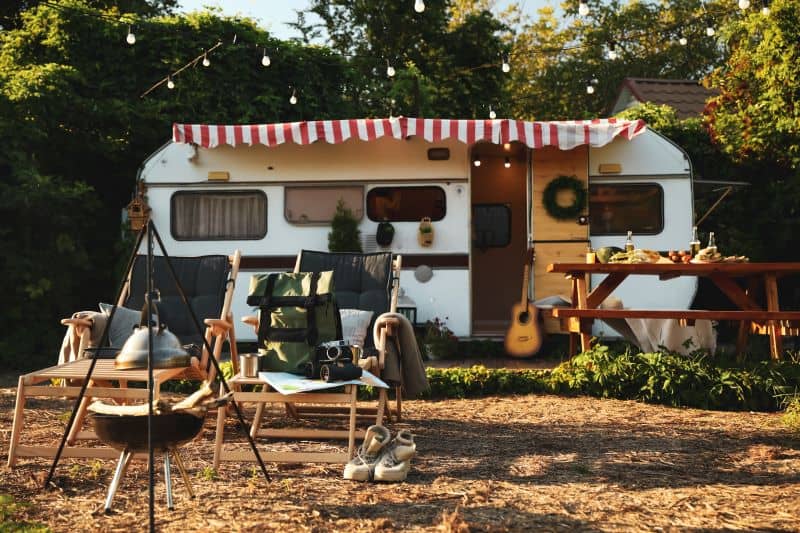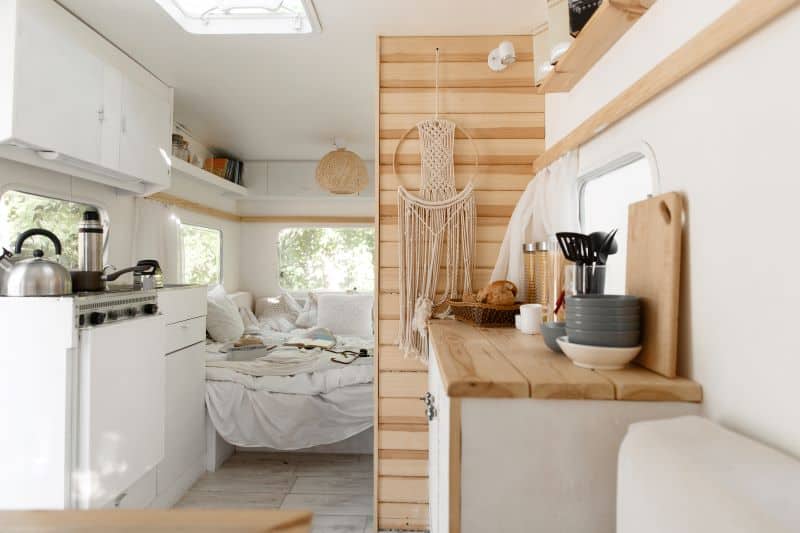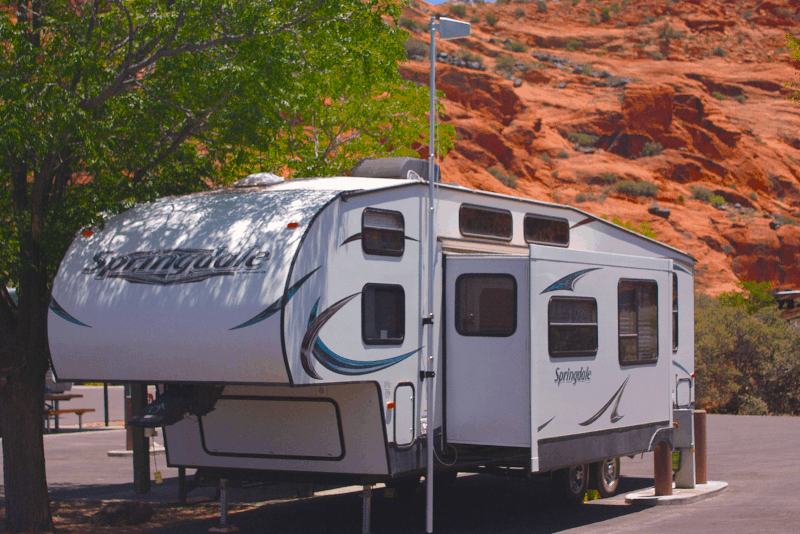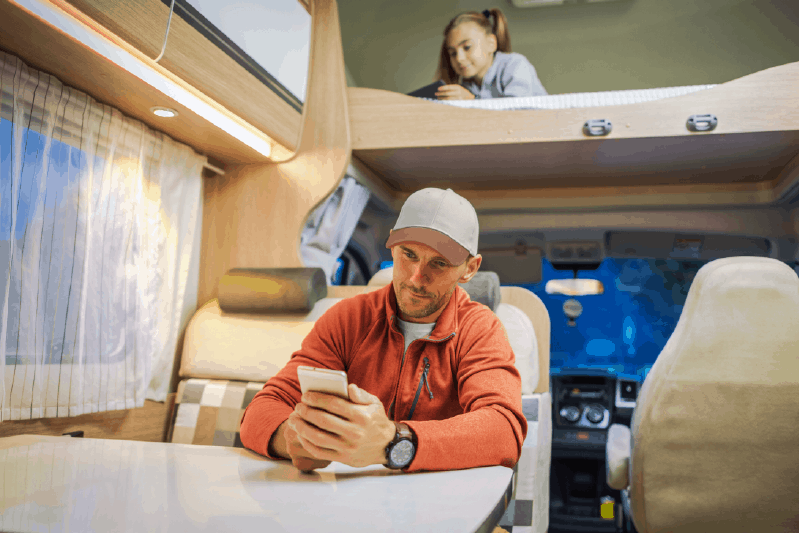Blog
Campsite Setup: How to Decorate Your RV Campsite
March 31, 2021 — by NICHOLAS JONES
SHARE ARTICLE[Sassy_Social_Share total_shares="ON"]
When you’re setting up your RV campsite, there are a few basic steps to help you create a fun, attractive, and welcoming environment. Whether you’re putting together a campsite for a simple overnight stay or are planning a week-long getaway, you can make it a great space for all the things you and your family want to do. You can even take steps to ensure you still have strong cell phone signal. We’ve put together a few suggestions.
Picking Out a Campsite
The best campsites tend to be in a central location in the campground and near conveniences like activity centers, pools, and bathrooms. Look for a site that’s level and has plenty of shade. A higher elevation will let you enjoy cooling breezes.
The length of your stay will decide what size site you need and how much camping equipment you’re going to want to bring alone. A small site and a couple of chairs will do for a short stay. Longer stays will involve a larger site and more gear.
Chairs and Hammocks
Furnishings are equal parts decor and material comfort for your campsite. Chairs, of course, are a necessity. Whether you prefer canvas director chairs, folding or backpack chairs, foldable stools, or reclining chairs, there are plenty of affordable and comfortable options that make attractive contributions to your camp.
Hammocks can maximize the functionality of your campsite. If the campground permits it, you can use two trees on your site to hang them. Some campgrounds have rules against this, so be sure to check before setting yours up.
Tables
Some campgrounds supply picnic tables that seat four people — or sometimes half a dozen. Public tables are often pretty heavily worn and warped from use. You can compensate for this by bringing a table cover with you. Research what the campground provides and, if they offer picnic tables, what size they are so you can bring the right-sized cover.
If they don’t provide a picnic table, bring your own storable table and a couple of fold-up side tables for guests to set food and drinks on. It’s also a good idea to have a separate fold-up cooking table to give you a space to place ingredients and utensils when preparing food.
Grills
Often, campgrounds come with a fixed charcoal grill or fire pit, which you can use in a pinch. But many campers have their own preference for grills.
There are some factors to keep in mind when choosing yours. Portability is one. Any grill for camping should be something one person can reasonably move without injuring themselves. Ease of assembly is important, too. A grill that you have to move around all in one piece after a long, complicated process of assembly can become a serious pain. It also takes up storage space and forces you to clean and keep track of numerous easy-to-misplace parts.
A medium-sized grill, preferably with long enough legs to set comfortably on a wooden picnic table without burning it, is generally the best choice. It’s even better if it comes with conveniences like a built-in thermometer and a removable grease catcher.
Rugs
Bring comfort to your outdoor experience by using campsite rugs, which come in a wide range of colors, patterns and designs. Rugs chosen for this purpose should be made in an open-weave style that doesn’t cut off light and kill the grass underneath. They should be water-resistant and easily movable and storable.
Large decorative rugs can be suitable for extended camping trips, but there’s typically a lot more work involved in storing, folding, and cleaning them than is worth it for short stays. One or two smaller rugs will do for most campsites, weighted down with stones, planks, or chairs.
It’s also a must to have a small mud rug to function as a welcome mat and entrance rug in front of the bottom step of your RV door. These are inexpensive items, and they keep dirt and mud from getting tracked into the RV’s cabin.
Lighting
Nothing brings the ambience of a campsite together quite like having the right lighting. Modern camping equipment offers plenty of attractive and beautiful options.
Lanterns
It’s good camping sense to always have at least one outdoor lantern. Kerosene and propane-powered lanterns used to be standard, but technology has advanced to the point where it’s not necessary to carry flammables if you don’t want to. Battery-powered and rechargeable LED lanterns are plenty bright and can be found at nearly all outdoor or camping stores.
Solar-Powered Lights
One particularly attractive and increasingly popular option is the solar-powered light, which is available in extremely compact and portable versions. Many such lights can be suspended above your site with some string and a little duct tape, providing four to six hours of illumination before recharging in the sun the following day.
Light Strings
Light strings come in a vast range of designs and colors and are a great way to bring a magical quality to your campsite. They can be used for extra light and ambience at night. Multicolored LED strings are one popular option, and there are inexpensive solar-powered light strings.
Cell Phone Signal Boosters for High-Quality Mobile Service
Though camping is naturally a means of “getting away from it all,” there’s no denying that the ultra-connected nature of modern society — especially since the rise of the smartphone and 4G service — has made our cell phones more indispensable to us than ever. More than a means of communication, they can be a lifeline to everything from weather alerts and current news to information from your home security system or that strange species of mushroom growing at the edge of the campground. And hey, what better way is there to make sure you’ve got music with you at your site?
With all the functions these mobile devices serve in our lives, having consistent and reliable cell phone signal is important even on a camping trip. Of course, that can also be the tricky part. Campgrounds are often remote by design and situated in dramatic natural settings, and two of the most common causes of weak cell signal are distance from the nearest cell tower and interference from hilly or mountainous terrain. Another cause can be adverse weather, which can have a greater impact in campgrounds than it would in an urban setting.
There isn’t always a way to compensate for these difficulties. If your signal is being cut off by an intervening mountain, you may have to simply live without mobile service until you can move to a point where it can be received. That said, wherever there’s a signal to work with, there is a solution that can deliver reliable, high-quality smartphone functionality: cell phone signal boosters like those provided by weBoost.
These boosters are a proprietary digital technology that uses antennas and an amplifier to capture a weak incoming signal and boost it by up to 32 times. Easy to install and maintain, weBoost’s boosters come in versions specifically designed for use with your RV. With this kind of booster in place, you’ll enjoy the numerous benefits of a strong, consistent cell phone signal.
Benefits of a Better Cell Signal
Consistent cell phone signal provides plenty of boons for RV camping, among them:
- Emergency preparedness: Access to emergency alerts and severe weather alerts through the Wireless Emergency Alerts (WEA) system can be a literal lifesaver in the face of disasters like tornadoes, fast-moving wildfires, severe thunderstorms, or flash floods. Keeping connected and keeping these alerts activated should be regarded as a basic safety measure.
- Steady connections to your emergency contacts: Emergency preparedness also applies to being able to reliably reach any emergency contacts back on the home front.
- Efficient power usage: Cell phones engaged in the search for a signal can wear down your battery faster because they repeatedly attempt to connect to a cell tower. A boosted signal keeps you online and stops that battery-wasting process in its tracks.
- Remote access to your smart home system: More and more people these days have smart home security and environmental control systems that allow them to log in and keep track of what’s happening in and around their homes while they’re away. These systems are tremendous contributors to peace of mind, if you can access them reliably.
Contact Us to Learn More
If you’d like to learn more about how a cell phone signal booster can improve your RV camping experience, contact the experts at weBoost today. From the Destination RV to the Drive Reach RV, we can help you find the solution that best meets your needs.
buttonbutton SHARE ARTICLE[Sassy_Social_Share total_shares="ON"]TAGS: RV



